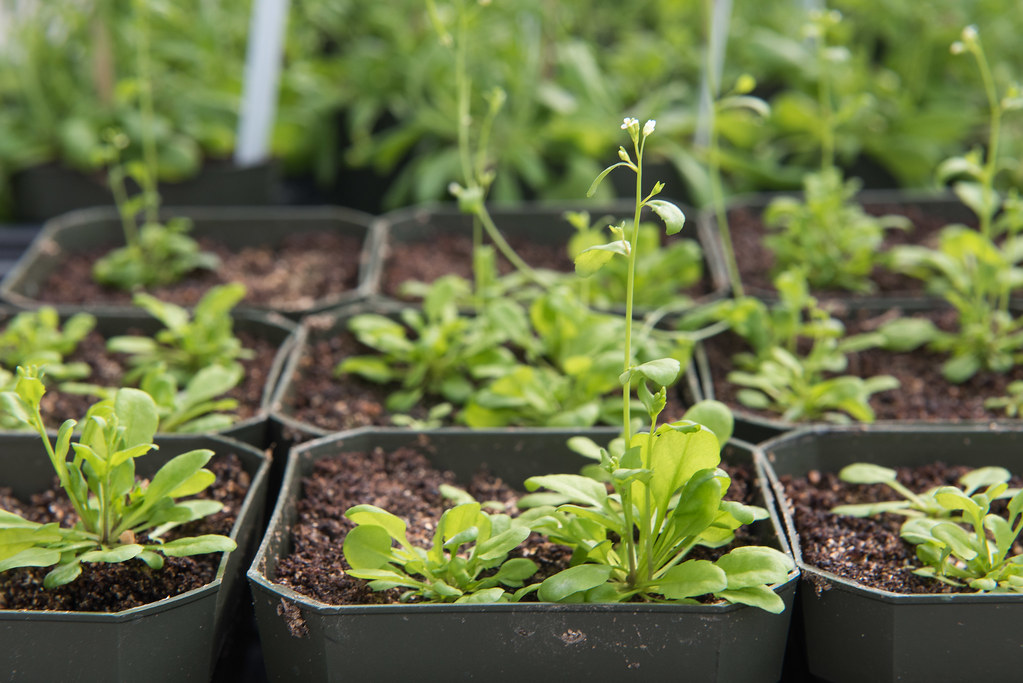Published on
By Karly Balslew | Bond LSC
If the world can be taxing on a person as pressure mounts, just think about how stress must feel to plants.
Humans can add a layer of clothing when cold or get a glass of water when thirsty, but plants do not share this simple luxury and must endure whatever environment they sprout in.
As climate change, pollutants, and extreme weather patterns escalate, this poses a serious global threat to plants and our food supply.
Ron Mittler, a principal researcher at the Bond Life Sciences at the University of Missouri, recently looked at how this piling up of multiple stressors at once can significantly decrease plant survival.
“The principle is that you can have a combination of several different stressors, each by itself has no effect on the plant but when they come together, they’re causing severe effects,” Mittler said.
Studying plant response to stress isn’t a new thing, but Mittler’s focus on the compounded effects of stressors may give us a better idea of the threshold of stress plants can endure in our changing climate. Multifactorial stressors combine three or more stress factors simultaneously impacting plants. Four categories of stress— biotic, climate, anthropogenic, and soil threats — all become worse as climate change and environmental pollution progress, subsequently decreasing plant quality of life.
Biotic threats relate to enemies like pathogenic bacteria and insects. Similarly, soil threats are determined by poor nutrient soil and salinity. Climate threats include extreme temperatures and drought. Anthropogenic threats are man-made as humans use harmful pesticides and create microplastics.
Arabidopsis thaliana seedlings, a model plant used in experiments, were placed side by side on a plate and received a combination of stress conditions such as heat, salt, excess light, acidity, heavy metal, and oxidative stress. Researchers studied the growth, survival, and molecular responses of the seeds. Seedlings were grown on plates rather than in soil to isolate and study the impact of multifactorial stress.
Seedlings grew on separate plates and experienced different individual or combined stresses. Results showed that each individual stressor applied to the seedling had a minimal effect on the plants but with the increase in the complexity and number of stress factors affecting the plants, survival, root growth, and chlorophyll content declined. Similar results were also found for seedlings grown in soil.
Ecosystems are already seeing these impacts in Florida and Germany. Multifactorial stress of heat and pollution prompted algae blooms to grow exponentially. This toxic overgrowth led to thousands of manatees dying. Entire forests in Germany are experiencing massive storms followed by long periods of drought, insect attacks, and fires.
Mittler said things may not look dire now, but we will eventually reach a point of no return where plants die off in mass quantities or even go extinct.
“The harmful effects of stress on the nation can serve as a dire warning for society. We may not see the effects now but 10, 20, 40 years down the road we will be having severe problems with our food chain,” Mittler said.
Since there are multiple factors at stake, predicting negative impacts on agriculture and ecosystems is tricky as researchers are unsure how this domino effect may unravel. What they do know for certain is that there will be severe consequences and we are already seeing them today.
These sporadic weather extremes are weakening the plants, making them more vulnerable to insect predators and other stressors.
The research yielded alarming results, and Mittler highlights that this is a dire problem that people need to take seriously. Once people understand the severity of this problem, he hopes individuals and policymakers will take action before the consequences become irreversible.
The Mittler lab is working on several fronts to address this problem and is trying to find a solution to it. They are currently studying multifactorial stress combination in different crop species, such as soybean, rice, and tomato. In addition, also identifying key plant regulators that are activated during multifactorial stress combination. These will be used in future breeding efforts to increase the tolerance of different crops to multiple stresses.
This study is now an international collaboration between the Mittler and Zandalinas laboratories, as Dr. Sara Zandalinas took on a faculty position in Spain.
